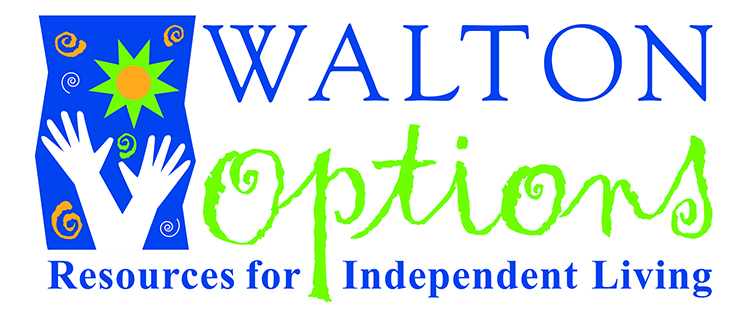Youth Transitions: Social Security Benefits available to Children and Adolescents
One of the most confusing things about the Social Security disability programs is that multiple benefits are available and each has its own set of eligibility requirements, operational rules, and work incentives. To complicate matters even more, some young people receive more than one type of benefit at the same time.
There are basically three different types of benefits provided to children and adolescents by Social Security:
1 – Supplemental Security Income (SSI)
SSI is the most common benefit provided to children and adolescents with disabilities. SSI is a federal program that gives monthly payments to people who are age 65 and older, or to people of any age who have a severe disability and who have little income and few resources. When determining eligibility, SSI income and resource limits are very low and strict.
To qualify, children must have a significant disability and the parents must have income and resources below annually established limits. Some states provide an additional cash supplement for SSI recipients in addition to the federal cash payments and most states provide full Medicaid eligibility to individuals who qualify for SSI.
2 – Child’s Benefits
Child’s benefits are the second most common form of Social Security benefits received by children and adolescents and they actually have nothing to do with the child’s disability status.
To qualify for child’s benefits, a child must have a parent who has a disability or is retired and collecting Social Security benefits, or a parent who died after having worked long enough and paid enough into the Social Security trust fund to establish “insured status”. The child must also be unmarried and younger than age 18 or up to 19 years and 2 months but still in high school. Unfortunately, child’s benefits do not automatically come with any health insurance coverage such as Medicaid or Medicare.
3 – Title II Disability Benefits (SSDI and CDB)
Title II disability benefits are the least common Social Security benefits received by children or adolescents.
Social Security Disability Insurance (SSDI) is provided to individuals with severe disabilities who have worked, paid into the Social Security trust fund, and earned enough credits to establish “insured status”. There is no minimum age to qualify for this benefit so it is possible for young people to qualify for SSDI, but it is uncommon since most adolescents don’t have enough work history to establish insured status.
The Childhood Disability Benefits (CBD) program is a more common way for young people to qualify for a Social Security benefit based on disability. To qualify for CDB, an individual must have a parent who has a disability or is retired and collecting Social Security benefits, or a parent who died after having worked long enough and paid enough into the Social Security trust fund to establish “insured status”. The individual must also be unmarried, at least 18 years of age, and meet Social Security’s definition of disability prior to the age of 22. The CDB program provides a monthly cash payment and Medicare eligibility after a 24 month qualifying period has been served.
What do you need to know about Your Supplemental Security Income (SSI) When You Turn 18?
When an individual turns 18, the Social Security Administration (SSA) will review their eligibility for continued SSI benefits based on disability rules for adults, including non-medical eligibility rules. The SSA calls this review the age-18 redetermination. During this medical review, they will send you a letter to ask for information about your disability such as:
- Name of any medicines
- Hospital stays and surgeries
- Visits to doctors and clinics
- Work activity
- Counseling and therapy
- Schools and special classes or tutoring
- Teachers and counselors who have knowledge of your condition
Doctors and other trained staff will decide if you meet the disability rules for adults. SSA disability rules for adults are different from the disability rules for children. Historically, about one-third of children lose their SSI eligibility following the age-18 redetermination.
Social Security Work Incentives and Supports
Social Security has a number of supports available to children and youth, that they call work incentives. They include:
- SSI Continued Payments (Section 301 Payments)
- Student Earned Income Exclusion (SEIE)
- Plan to Achieve Self-Support (PASS)
- Works Incentives Planning and Assistance (WIPA)
- Grants and Scholarships
- Achieving a Better Life Experience (ABLE) account
You can find out more about all of these and the age-18 redetermination in the downloaded booklet “Social Security: What You Need to Know About Your Supplemental Security Income (SSI) When You Turn 18.” Click here to download the booklet.
What next?
Working with a WIPA project is often a first step for beneficiaries who want to go to work.
The WIPA Project funded by a grant from the Social Security Administration for Georgia is the Walton Options WIPA Program and is located at 948 Walton Way, Augusta, GA. 706-724-6262 V/TTY; 877-821-8400. The Lead CWIC for the WIPA Program is Robbie Breshears.
Social Security provides the Ticket to Work National Helpline for beneficiaries of social security benefits based on disability who are thinking about going to work. The helpline can provide basic information about the Ticket to Work program and will refer to WIPA program for services if needed and desired.
The TTW helpline can be reached at 1-866-968-7842/1-866-833-2967 (TTY) from M-F 8am-8pm.
Looking for more information? Click on the links below to find out more about more about our WIPA programs.
What is WIPA?
Project 20/20
FAQs about WIPA
Our WIPA services are available to consumers in our Georgia service area. If you are a consumer in South Carolina who is interested in WIPA services, you can contact the Ticket to Work Helpline at 1-866-968-7842. Additionally, Walton Options is a Ticket to Work Provider in Georgia. To find out more about the program, go to our Ticket to Work page.
We developed portions of this website at U.S. taxpayer expense

